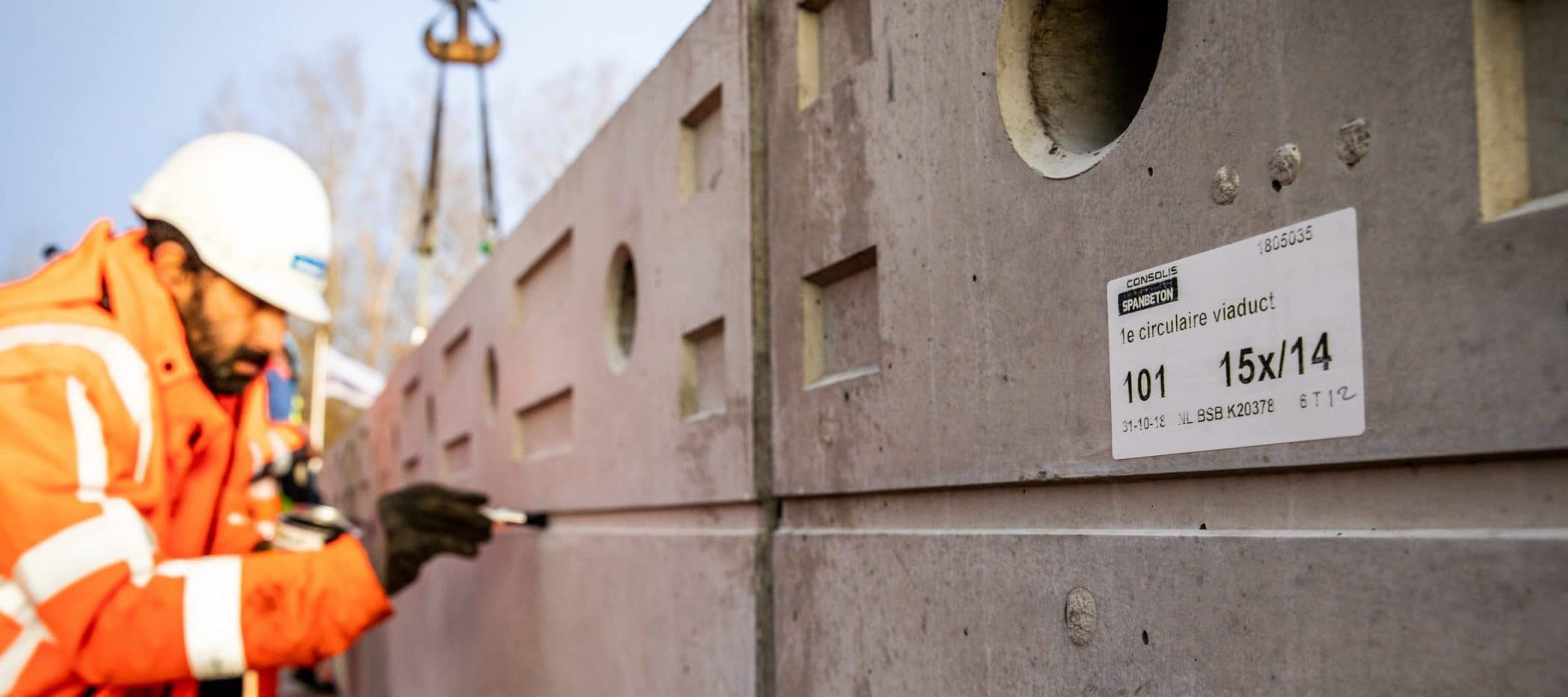Since the 2015 Paris Agreement, 195 countries have committed to accelerate and intensify actions and investments for a sustainable low carbon future and the optimisation of raw material. In this context, a consortium made of local contractors and precast concrete manufacturer Spanbeton, a subsidiary of Consolis Group, have been partnering to design and build a circular viaduct in Kampen, The Netherlands. A first in The Netherlands – supported by the Dutch government which launched a wide Circular Economy programme in 2016.
Designed for reassembly
For this project, innovating and collaborating with Spanbeton’s partners from the design stage allowed to think and act differently towards Circular Economy. The viaduct has a span of 20 meters and consists of 40 concrete elements, all manufactured at Spanbeton’s factory in Koudekerk aan den Rijn.
To reach the goal of circular building, Spanbeton and its partners invented new solutions such as the joints between the elements. The working methods have been really different, really open, bringing together people from different expertise and skills. The circular viaduct was inaugurated on 14 January in presence of the State Secretary for Infrastructure & Water Management Stientje van Veldhoven.
Meeting circular construction challenges
Precast concrete makes it possible to meet circular construction challenges: modularity, traceability and reuse.
MODULARITY: The uniqueness of the design is that the elements can be disassembled, moved and re-used to rebuild a completely new viaduct. Since no new elements will be needed to create a new bridge, the next bridge will have a very low CO2 footprint.
TRACABILITY: The behaviour of the viaduct is monitored by high sensitive sensors embedded into the elements. In addition, all elements are equipped with an RFID chips which always keeps all specifications of the elements digitally available and also entails the chronological documentation of the possible applications of the element. This material database contains sufficient detail to allow designers in the future to understand what material is in the built environment and when it would be available for use.
REUSE: What could symbolize sustainable construction practice more than that of reusing existing building components to expand or erect new structures? Unlike some other materials, precast fits particularly the circular challenge. It is now possible to erect a construction work such as the Kampen viaduct without disassembling waste at the end and with reinstalling capabilities. Considering that viaducts last up to 50 years, circular construction offers a wide range of opportunities and will surely help shape the future of our industry.

